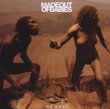| All Artists: Carnicer, Rosique, Mcpherson, Pirgu, Regazzo Title: Elena E Costantino Members Wishing: 1 Total Copies: 0 Label: Dynamic Italy Original Release Date: 1/1/2009 Re-Release Date: 7/28/2009 Album Type: Import Genre: Classical Style: Opera & Classical Vocal Number of Discs: 2 SwapaCD Credits: 2 UPCs: 675754017286, 8007144606190 |
Search - Carnicer, Rosique, Mcpherson :: Elena E Costantino
 | Carnicer, Rosique, Mcpherson Elena E Costantino Genre: Classical
|
Larger Image |
CD DetailsSimilar CDs |
CD ReviewsMusic Web International review for "Elena e Costantino" Tenergy | Seattle, WA USA | 12/12/2009 (4 out of 5 stars) "Dynamic are continuously putting us in debt for their inveterate exploration of unknown operas - especially Italian operas by Spanish composers. The general tendency has been to favour those composers who have spent a lot of time in Italy studying, but Ramón Carnicer is one exception. He had his musical training in Spain from Spanish teachers, and it was only when he became director of an opera company that he had reason to visit Italy to engage singers and to get a picture of the artistic trends. For the first season he engaged the composer and conductor Pietro Generali, who opened with Rossini's L'Italiana in Algeri. Not previously having written music for the stage, Carnicer then embarked upon such a career, enabling him to produce a number of successful operas during more than a decade. In younger days he had been an admirer of Mozart but now Rossini became his model and he even wrote alternative overtures for Il barbiere di Siviglia and Il Turco in Italia, both of which were praised by the composer.
Elena e Costantino was his second opera, premiered on 16 June 1821 at the Teatro de la Santa Cruz in Barcelona. It was a great success and is regarded as one of his best works. His admiration for Rossini is obvious from the outset. The overture has all the fingerprints of the master from Pesaro, melodically, harmonically and structurally and with that typical Rossinian crescendo, which we meet at every climax throughout the opera. The overture is a brilliant piece, around seven minutes long and should be a riveting opening piece in an orchestral concert. After it every single person in the audience should be in high spirits. The following chorus is also lively and exciting and further on in the opera there are several choral pieces, entertaining as well as dramatically valid. The story unfolds rather straightforwardly; there are secco recitatives, but not very long, and they more often than not develop into musically substantial scene. Generally it is interesting to note how Carnicer weaves together recitatives, arias, ensembles and cabalettas into longer sequences, almost in the manner of Giuseppe Verdi. Orchestral introductions are often beautifully orchestrated and in a couple of arias there are instrumental obbligatos: a flute in Riccardo's aria (CD 1 tr. 10), a violin in Anna's aria (CD 2 tr. 7). There is a trio in act I that is a minor masterpiece, the Edmondo - Carlo duet in act II (CD2 tr. 8-9) is musically as well as vocally a highlight and the prison scene in the same act is touching in a Verdian manner. In other words it is a compositional style that points forward rather than harking back to Rossini, who by the way was several years younger. That said, Carnicer only started writing operas when he was in his early thirties. Arias are florid and - as must be expected - rather repetitive, and he shows his compositional skill in the climactic ensembles. It's a shame that this work has been unperformed for so long and the opera-loving public should feel gratitude towards Jesús Löpez Cobos and his forces, who have dusted off this work with such endearing results. The plot - and now I quote the booklet synopsis - goes: `Prince Costantino, son of Adolfo, Lord of Arles, has been accused of the murder of his father. The real killer, though, is Romualdo, a relative of Adolfo who has seized the throne. Elena, Costantino's wife, has found refuge with her young son in the house of the peasant Carlo where, disguising herself as a man (Riccardo) she works as a servant. In the meantime, the usurper to the throne has died, after confessing his crime to his son Edmondo. As the opera opens, Carlo, who has his suspicions about the identity of Riccaro/Elena, discovers the truth. Costantino, worn out from long exile, returns to Tarascona to find word of his wife. He happens to run into Carlo, who suspects her true identity. Word of his presence spreads in Tarascona; Elena and Costantino meet and recognize one another, but are captured by Edmondo's troops. The Governor and the people cry out for their deaths, while Carlo works to free them.' When act two begins `Edmondo is torn between the wish to reveal the true murderer - his father - and the need to dispense justice. Through Carlo, he tries to ensure a quick escape for the condemned people. But they, together with their little son, are caught and led before the tribunal. Now though, Edmondo puts his filial devotion second and reveals his father's crime, thereby exonerating the prince, who is then restored to his rightful throne.' Jesús López Cobos is a reliable and often inspired conductor. He finds the right tension to make the drama move on eagerly, up to the happy end - which we had hoped for but know from experience that rarely works out that way in opera. But this is after all a `heroic-comic drama in two acts' and everything is in fact sorted out. The comic elements are limited to Elena's disguise and Carlo's daughter Anna being in love with her (Elena) as Riccardo but also to some bickering between Anna and Urbino, who is in love with her. There are also a couple of scenes where Carlo speaks quite mockingly to his daughter and to Elena. But it is the serious elements that provide the essence of the drama and in general the soloists are more than apt at chiselling out their characters, which are far from one-dimensional. Not quite the hero but in many ways dominating the action - at least in the first act - is Lorenzo Regazzo. Not only is he the possessor of one of the finest bass-baritone voices around, he is also a masterly interpreter: expressive with dramatic flair and even through the speakers he conveys a face. `Regazzo's servant is as theatrical as any in my memory', I wrote in my review of René Jacobs' superb Don Giovanni when it appeared almost two years ago. His Carlo just confirms this. Ruth Rosique is also very good in the dual role of Elena/Riccardo. Her bright voice can express sorrow as well as agitation with equal aptness and she has all the technique needed for the florid writing. Robert McPherson as Costantino is youthful, maybe more so than is suitable for so worn a person as the prince. Initially he seems over-careful, but he grows and the prison scene is very fine indeed. Mariola Cantarero as Anna also starts a bit hesitantly with some shaky singing but in her second act aria (CD 2 tr. 7) she shows her true mettle and her final high note receives the greatest ovation of the evening. Eduardo Santamaria as the Governor and David Menéndez as Urbino fail to make much of a stir - in roles that, it must be admitted, give them little scope to shine. The young Albanian tenor Saimir Pirgu is a find: a superb lyric tenor, smooth, with brilliant top notes and florid technique to match. Listen to his cabaletta in act I (CD 1 tr. 21) to see what I mean. This is Rossinian tenor singing of the highest order. The recording is well balanced and allows the listener to hear a lot of orchestral detail without masking the important solo singing. Stage noises are almost non-existent and there are few signs of an audience - apart from applause. As always with these Dynamic issues Danilo Prefumo provides excellent liner-notes. Taken as a whole this is a more or less sensational treasure trove of an opera that I guess very few readers were even aware of its existence. Anyone believing that this must be `Rossini with water' only needs to play the overture to be proven wrong. And what follows is just as riveting. Göran Forsling [...]" |

 Track Listings (21) - Disc #1
Track Listings (21) - Disc #1

